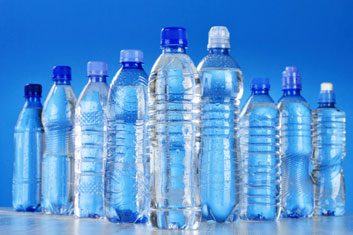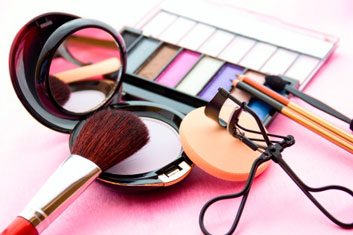
Bisphenol-A (BPA)
What it is: Bisphenol-A, or BPA for short, is a chemical found in some, but not all, hard plastics and plastic linings.
How it might harm: In animal studies, BPA has been shown to suppress a hormone that interacts with insulin – which helps us metabolize sugar – suggesting BPA might lead to insulin resistance and diabetes. In addition, BPA has shown to mimic estrogen in animals, a hormone that encourages weight gain among girls in puberty and later in life.
In addition to the animal studies, a study of 1,326 grade-school students published in PLoS ONE last year found those with BPA levels in their urine were two to five times as likely to be overweight than those with normal levels.
How to avoid it: Look for canned products, kids toys and water bottles that have “BPA free” on the label. Another trick is to avoid plastics with the recycle codes 3 or 7, as many such plastics have BPA.

Organochlorine Pesticides
What they are: Used to deter insects, these are the oldest and most toxic pesticides. While known dangerous organochlorine pesticides like DDT were banned decades ago, others are still in use. For example, though Health Canada announced it would phase out the organochlorine insecticide Endosulfan in 2011, its sale is permitted until the end of this year.
How they might harm: Organochlorine pesticides may be linked to diabetes, as in the lab, these chemicals impair insulin function. In addition, a 2011 study of 2,000 adults found those with whose levels of these chemicals in their blood were in the top 10 percent were more than twice as likely to suffer Type 2 Diabetes, compared with those in the bottom 10 percent.
How to avoid them: Most of us simply can’t afford to eat organic all the time, but we can reduce our intake of pesticides by buying organic when it comes to the most chemical-laden produce, included “The Dirty Dozen” list by the Environmental Working Group. Also, look out for lidane, an organochlorine insecticide still used in lice shampoos.

Parabens
What they are: Parabens are used in most cosmetics, including mascara, shampoo and lotions. The David Suzuki Foundation estimates 75 to 90 percent of cosmetics contain parabens.
How they might harm: Like BPA, parabens are so chemically close to estrogen, our bodies mistake it for the female hormone. Estrogen can promote weight gain, especially among the hips and thighs.
Weight gain isn’t the only concern, however. One study of 160 breast cancer tumour samples, published in the Journal of Applied Toxicology in 2012, found the presence of at least one paraben in 99 percent of samples.
How to avoid them: Look out for any ingredient that ends in paraben, including methylparaben, ethylparaben, propylparaben, butylparaben and benzylparaben. Many cosmetics now advertise “No Parabens” or “Paraben Free” on the label. Check out the Safe Cosmetics website for more info on harmful products in cosmetics.

Phthalates
What they are: Pronounced ‘tha-lates,’ these chemicals are used to make plastics more soft so they don’t become brittle and break. They’re found in electronics, toys and more. They’re used to preserve the texture of some cosmetics and toiletries.
How it might harm: Phthalates may interfere with various hormonal signaling. A 2011 study by the University of Michigan of 1,700 adult and teens found that those who fell in the highest 20 percent for exposure to di(2-ethylhexyl) phthalate or DEHP – as measured in their urine – were at an increased risk of decreased thyroid function. One of the symptoms of hypothyroidism is weight gain. Another study that analyzed breastmilk samples from 130 women, meanwhile, found that those who were taking in higher concentrations of phthalates had a slight decrease in testosterone levels.
How to avoid it: Look for ingredients that include the word phthalate. In cosmetics, the chemicals sometimes go under the acronyms DBP and DEP. Also, parents of infants should buy children’s toys that are free of phthalates – after all, they tend to end up in their mouths.

Triclosan
What it is: An antibacterial and antifungal agent found in some antibacterial soaps, cleaners and toothpastes.
How it might harm: Studies on triclosan are limited to animals, but in mice and frogs it’s been shown to affect hormone function. For example, one 2012 study at UC Davis exposed mice and fish to small amounts of triclosan – similar to what humans would be exposed to through products – and found the presence of the chemical reduced muscular strength. Another study by Caren Helbing, a professor of biochemistry at the University of Victoria, found tadpoles exposed to triclosan developed into frogs faster than those not exposed to the chemical.
How to avoid it: Because it only comes under one name, this one is easy to spot on the label.
Related:
• 10 food additives you should avoid
• Are chemicals preventing you from losing weight?
• Parabens: What are they, and are they really that bad?
